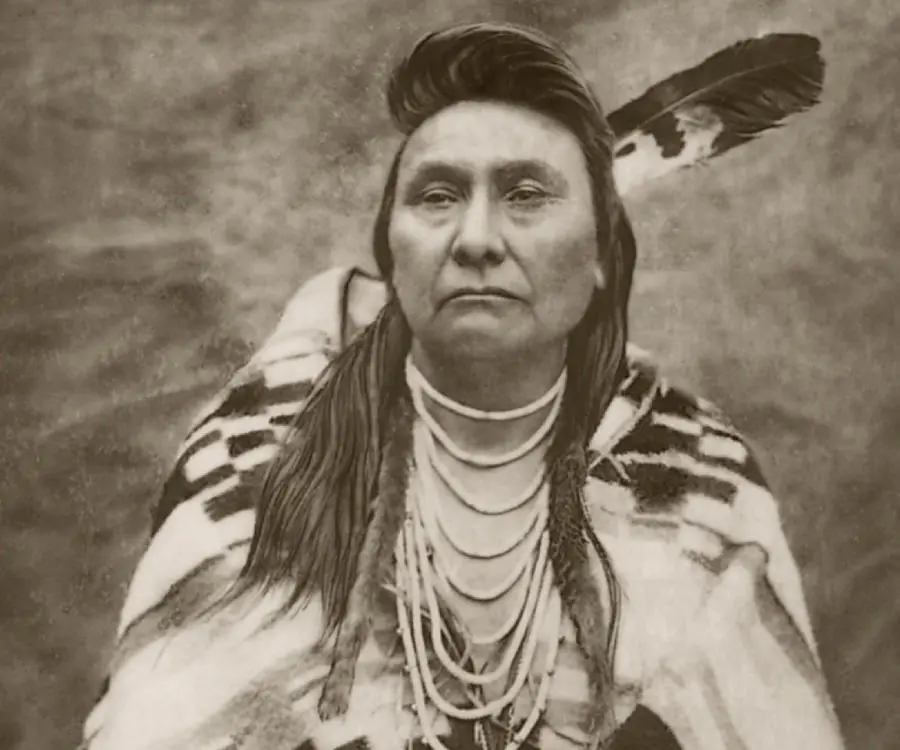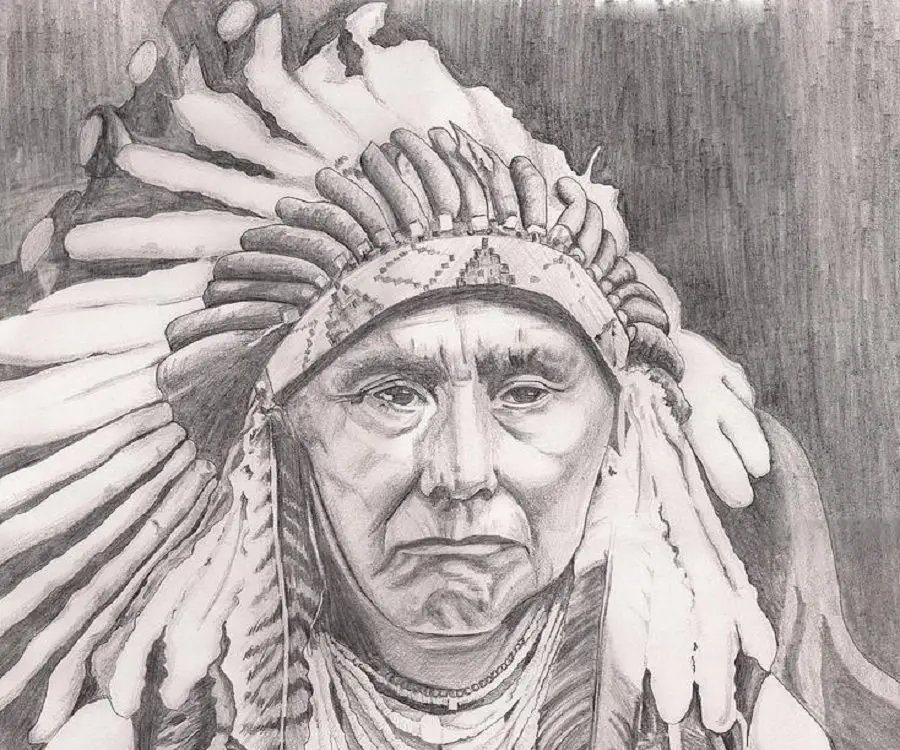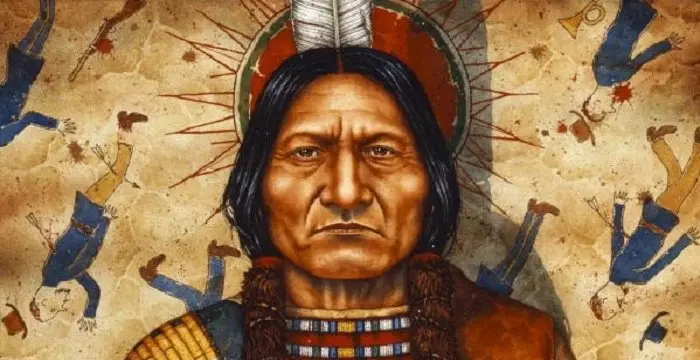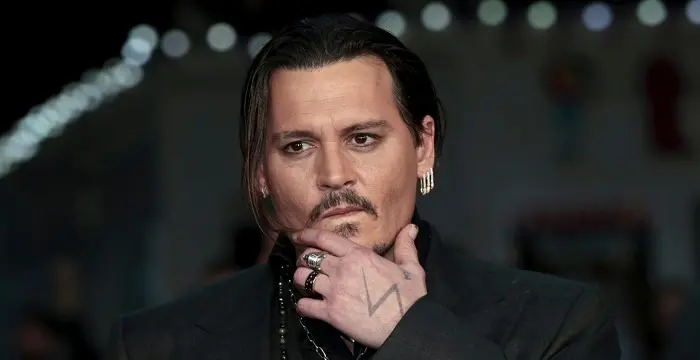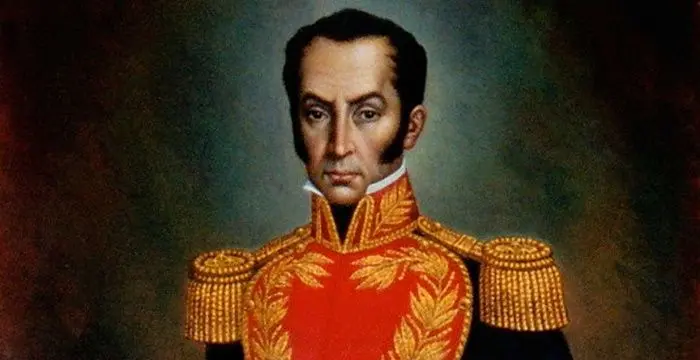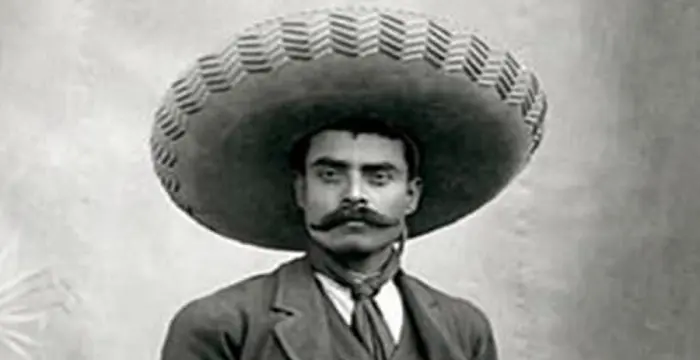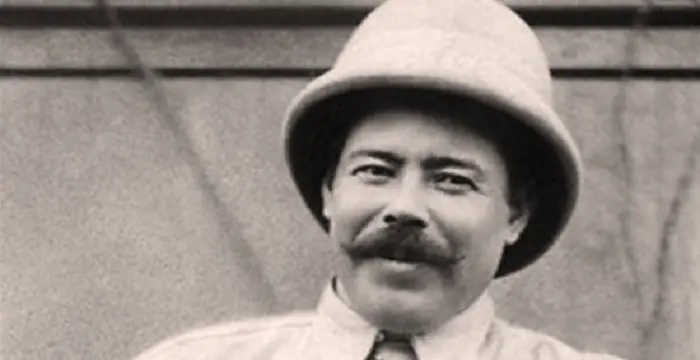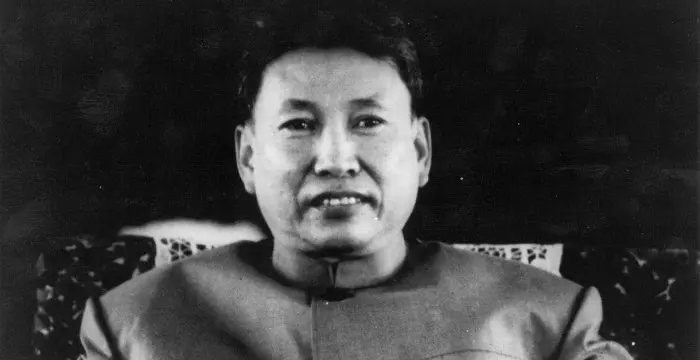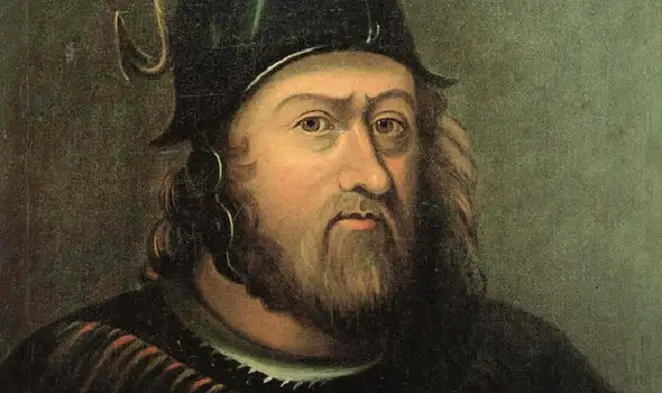Chief Joseph - Nez Perce Leader, Career and Family
Chief Joseph's Personal Details
Chief Joseph was the leader of a Native American tribe who led his followers in one of the most dramatic retreats in the history of America
| Information | Detail |
|---|---|
| Birthday | March 3, 1840 |
| Died on | September 21, 1904 |
| Nationality | American |
| Famous | Native Americans, Leaders, Revolutionaries, Nez Perce Leader |
| Spouses | Heyoon Yoyikt, Springtime |
| Siblings | Ollokut, Sousouquee |
| Childrens | Jean-Louise |
| Birth Place | Wallowa River |
| Religion | Christian |
| Gender | Male |
| Father | Tuekakas |
| Mother | Khapkhaponimi |
| Sun Sign | Pisces |
| Born in | Wallowa River |
| Famous as | Nez Perce leader |
| Died at Age | 64 |
Chief Joseph's photo
Who is Chief Joseph?
Chief Joseph was the leader of the Wallowa band of Nez Perce tribe in Oregon, U.S. who received international media coverage for his daring attempt to lead his followers to Canada when the U.S. government tried to force his tribe to move to a reservation. His father Chief Joseph the Elder had tried his best to maintain cordial relations with the whites. He had even converted to Christianity and had taken up the Christian name ‘Joseph’ which he shared with his son. He had signed a treaty with the U.S. government that promised millions of acres of land to the Nez Perce tribes. But by the time his father died and Chief Joseph took over the reins of leadership, the relations between the government and the natives had become increasingly turbulent. When the government tried to forcibly remove the tribes from their motherland and relocate to a reservation, he led his followers on a march towards Canada. They were relentlessly pursued by the U.S. Army in what came to be known as the Nez Perce War. Chief Joseph, along with other tribal leaders, led the warriors in an incredible display of courage and fortitude against the U.S. Army. However, after their resources were exhausted and the number of warriors had dwindled, Chief Joseph had no other option but to surrender.
// Famous Leaders
Edi Rama
Edi Rama is the current Prime Minister of Albania. Check out this biography to know about his childhood, life, achievements, works & timeline.
Tecumseh
Tecumseh was a Native American leader of the Shawnee clan. This biography profiles his childhood, life and timeline.
Khalifa bin Zayed Al Nahyan
Sheikh Khalifa bin Zayed Al Nahyan is the current President of the United Arab Emirates (UAE). Check out this biography to know about his birthday, childhood, family life, achievements and fun facts about him.
Childhood & Early Life
Chief Joseph was born as Hin-mah-too-yah-lat-kekt into the family of Chief Joseph the Elder, the leader of the Wallowa band of the Nez Perce tribe in Oregon. His father’s name was Tuekakas and his mother’s name was Khapkhaponimi. He had several brothers and sisters.
His father converted into Christianity and took up the name Joseph after being baptized in 1838. The son was also named after the father.
Not much is known of his childhood as it was spent in the tribal territories. As the son of a tribal leader he is sure to have received training in warfare and guidance on the tribal ways of life from his fathers and the other elders, though it is not known if he ever received any formal education.
His father attempted to maintain good relations with the whites, often going out of his way to do so.
His father signed a treaty with the U.S government in 1855 that promised a new reservation for the Nez Perce. But the government violated the treaty and whites began to occupy the tribes’ lands.
In 1863, the government tried to make the Nez Perce accept a much smaller reservation than what was agreed upon earlier. Joseph the Elder refused this treaty, called the ‘Lapwai Treaty’.
However some of the bands of the Nez Perce accepted the treaty and moved into the reservation. But Chief Joseph the Elder was adamant in his resolve: his band would not leave their motherland.
Later Years
In 1871, Chief Joseph the Elder died and his son became the leader. The period was marked by very turbulent relations between the government and the tribes.
The Army tried to force the remaining members of the Nez Perce tribe to move themselves to the Lapwai Reservation in early 1877. The tribes reluctantly agreed in order to avoid any violence.
Violence erupted in spite of the Chief’s best efforts to avoid it: some tribal men killed and injured whites in an act of revenge, making a war with the U.S. Army inevitable.
Chief Joseph, along with the other important Nez Perce chiefs, White Bird and Looking Glass decided to lead their followers, estimated to have numbered between 700 and 1000, on a retreat towards Canada.
General Oliver Howard led the U.S. Army in the attack on the tribes, which came to be known as the Nez Perce War. The army faced a surprising defeat at the hands of the tribes in the opening battle.
Over the next few months, the Nez Perce bravely carried on their march, taking with them whatever belongings they could probably carry. They covered over 1100 miles of rough terrains across Oregon, Washington, Idaho and Montana, while valiantly fighting off their pursuers who greatly outnumbered them.
A fierce five-day battle took place which wiped out most of the tribal warriors. Many great heroes of the war, including the Chief’s brother was killed. All their food and clothing reserves were depleted. The physical and mental toll of the war was too much for the Chief to continue.
Chief Joseph formally surrendered to the U.S. Army on 5 October 1877 in the Bear Paw Mountains, hardly 40 miles away from his destination. The touching speech which he gave at his surrender won him the admiration and respect of the U.S Army and the general public.
The Nez Perce war was covered in depth by the media, and the Chief and his tribe were much appreciated for the courage and bravery they had shown in attempting the retreat. His valour earned him the name ‘Red Napoleon’.
He met the President in 1879 to plead the case of his people but was not granted his petition. He along with his remaining tribe members were shifted to the Colville Indian Reservation, away from his homeland.
Major Battles
Chief Joseph is most famous for his role in leading his followers in the Nez Perce War against the U.S. Army in 1877. He along with the other chiefs, White Bird and Looking Glass courageously fought the army while guiding the followers on a march towards Canada.
Personal Life & Legacy
He had many wives and children as was the custom of the tribes. Two of his better known wives were Heyoon and Springtime.
He died on 21 September 1904 aged 64 while living in the Colville Indian Reservation. His doctor stated that he died of a “broken heart”.
Trivia
The literal meaning of his name in his native language was “Thunder Rolling down the Mountain".
The Chief Joseph Scenic Highway in Wyoming, named in his honour, traces the route followed by the Chief and his tribes on their march towards Canada.
A television movie based on his life, titled, ‘I Will Fight No More Forever’ was made in 1975.
// Famous Native Americans
Tecumseh
Tecumseh was a Native American leader of the Shawnee clan. This biography profiles his childhood, life and timeline.
Sitting Bull
Sitting Bull was a Teton Dakota Indian chief who led Sioux tribes in their struggle for survival on the North American Great Plains.
Johnny Depp
Johnny Depp is a famous Hollywood actor renowned for his roles of Captain Jack Sparrow in the ‘Pirates of Caribbean’ movies. To know more about his childhood, profile, career and timeline read on the following biography
Chief Joseph biography timelines
- // 3rd Mar 1840Chief Joseph was born as Hin-mah-too-yah-lat-kekt into the family of Chief Joseph the Elder, the leader of the Wallowa band of the Nez Perce tribe in Oregon. His father’s name was Tuekakas and his mother’s name was Khapkhaponimi. He had several brothers and sisters.
- // 1855His father signed a treaty with the U.S government in 1855 that promised a new reservation for the Nez Perce. But the government violated the treaty and whites began to occupy the tribes’ lands.
- // 1863In 1863, the government tried to make the Nez Perce accept a much smaller reservation than what was agreed upon earlier. Joseph the Elder refused this treaty, called the ‘Lapwai Treaty’.
- // 1871In 1871, Chief Joseph the Elder died and his son became the leader. The period was marked by very turbulent relations between the government and the tribes.
- // 1877The Army tried to force the remaining members of the Nez Perce tribe to move themselves to the Lapwai Reservation in early 1877. The tribes reluctantly agreed in order to avoid any violence.
- // 1877Chief Joseph formally surrendered to the U.S. Army on 5 October 1877 in the Bear Paw Mountains, hardly 40 miles away from his destination. The touching speech which he gave at his surrender won him the admiration and respect of the U.S Army and the general public.
- // 1879He met the President in 1879 to plead the case of his people but was not granted his petition. He along with his remaining tribe members were shifted to the Colville Indian Reservation, away from his homeland.
- // 21st Sep 1904He died on 21 September 1904 aged 64 while living in the Colville Indian Reservation. His doctor stated that he died of a “broken heart”.
// Famous Revolutionaries
Tecumseh
Tecumseh was a Native American leader of the Shawnee clan. This biography profiles his childhood, life and timeline.
Simon Bolivar
Simón Bolívar was a Venezuelan military leader who was instrumental in independence of several Latin American countries from the Spanish rule. This biography profiles his childhood, life, achievements and timeline.
Emiliano Zapata
Emiliano Zapata was a Mexican revolutionary leader and one of the most important figures of the Mexican Revolution.Check out this biography to know about his childhood, family life, achievements and other facts about his life.
Pancho Villa
Pancho Villa is one of the most renowned names of the ‘Mexican Revolution’ who was also the Governor of Chihuahua. This biography provides detailed information about his childhood, profile, career and timeline
Pol Pot
Pol Pot was the Cambodian revolutionary who led the Khmer Rouge. This biography provides a glimpse of his childhood, career, profile and timeline.
William Wallace
William Wallace was a Scottish knight who was a central figure in the Wars of Scottish Independence. This biography of William Wallace provides detailed information about his childhood, life, achievements, works & timeline.
Chief Joseph's FAQ
What is Chief Joseph birthday?
Chief Joseph was born at 1840-03-03
When was Chief Joseph died?
Chief Joseph was died at 1904-09-21
Where was Chief Joseph died?
Chief Joseph was died in Colville Indian Reservation
Which age was Chief Joseph died?
Chief Joseph was died at age 64
Where is Chief Joseph's birth place?
Chief Joseph was born in Wallowa River
What is Chief Joseph nationalities?
Chief Joseph's nationalities is American
Who is Chief Joseph spouses?
Chief Joseph's spouses is Heyoon Yoyikt, Springtime
Who is Chief Joseph siblings?
Chief Joseph's siblings is Ollokut, Sousouquee
Who is Chief Joseph childrens?
Chief Joseph's childrens is Jean-Louise
What is Chief Joseph's religion?
Chief Joseph's religion is Christian
Who is Chief Joseph's father?
Chief Joseph's father is Tuekakas
Who is Chief Joseph's mother?
Chief Joseph's mother is Khapkhaponimi
What is Chief Joseph's sun sign?
Chief Joseph is Pisces
How famous is Chief Joseph?
Chief Joseph is famouse as Nez Perce leader
